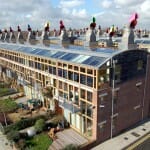No data found for Custom Course Number
No data found for Custom Course Units
Intended Audience: HVAC, Building and design Engineers.
PDH UNITS: 5
Buildings exist primarily to provide a healthy and comfortable environment in which people can work and live. The indoor environment must be maintained at a comfortable and healthy temperature, have an adequate supply of fresh air, be free from damp, draughts and pollutants and be quiet and well lit. A comfortable indoor environment has to rely on the use of energy for lighting, heating, ventilation and air conditioning (HVAC) systems. Energy consumption for HVAC systems often accounts for the major portion of a building’s energy usage and there is a great global emphasis on reducing the reliance of buildings energy and a move toward Nearly Zero Carbon Buildings (NZCB). The urgent need to reduce the energy used in buildings has brought about significant changes in the way buildings are designed and built. Because buildings encompass complex interactions between different requirements and subsystems, care must be taken when changes are made to any one aspect of building performance to ensure that this does not have a detrimental effect on other building functions. In part 1 of the course titled “Energy Saving HVAC Tips for Green Buildings”, we learnt the main strategies for energy efficient building architecture, building design, construction materials, location and orientation, and efficiency tips for cooling equipment including chillers, pumps, cooling towers, water treatment and other package equipments. In this 5- hour (Part-2) of the course, we will focus on achieving a satisfactory balance between air distribution systems for improving indoor air quality (IAQ) and the rational use of energy. The course discusses the energy efficient HVAC equipment including air handling systems, efficient ventilation technologies (e.g. heat recovery, demand control, etc.), ductwork and piping system, heating equipment, system controls and energy management systems. Design engineers, consulting engineers, architects, realtors, building owners, facility managers, interior designers, landscape architects, construction managers, and educators will benefit from this course.
Learning Objectives
At the conclusion of this course, you’ll be able to identify and discuss:- Selection criteria for energy efficient air distribution system including air handlers, variable air volume systems, optimal air distribution systems, and ductwork
- The heat recovery devices and systems such as airside & waterside economizers, enthalpy & heat wheels, heat pipe systems and run-around systems
- Alternate system designs using dedicated outdoor air handling systems, demand control ventilation, displacement ventilation, hybrid ventilation, heat pumps and evaporative cooling systems
- Energy efficient space heating systems including furnaces, boilers, heat recovery devices, radiant slab and panel heating systems
- The concepts of thermal energy storage and energy management systems
- The commissioning requirements of testing, adjusting and balancing
Once completed, your order and certificate of completion will be available in your profile when you’re logged in to the site.










